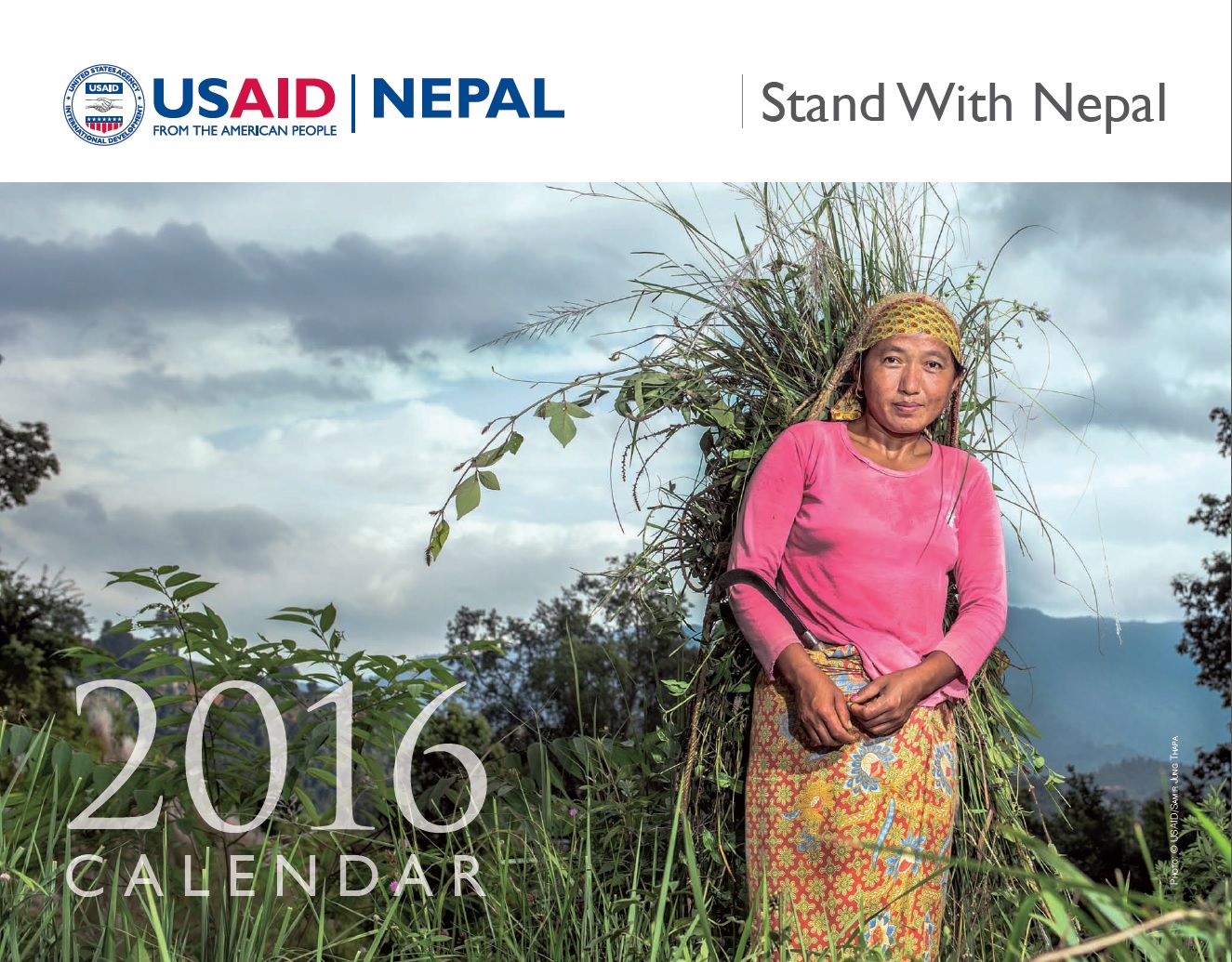![]() (7 MB) USAID Nepal 2016 Calendar
(7 MB) USAID Nepal 2016 Calendar
Message from Dr. Beth Dunford, USAID Mission Director for Nepal
On April 25, 2015, the earth shook as the Gorkha earthquake rumbled through Nepal’s cities and villages, followed by numerous aftershocks that ultimately claimed 9,000 lives and injured nearly 25,000 more people—people who were mothers and fathers, brothers and sisters, aunts and uncles, children and grandchildren. Nepal lost precious lives, and this country also lost some of its most sacred treasures—over 30 monuments leveled in the disaster, including monasteries, temples, and holy sites. More than 750,000 homes were either damaged or destroyed, leaving traumatized victims without shelter.
But where concrete and steel fell, the Nepali people stood, and with them, so did Americans. Perhaps covered in dust and shock, but we stood. In the days that immediately followed the quake, I personally went to the affected districts to survey the damage. As a mother of two small children myself, I could not help but want to comfort and console children who were not mine. The bond of parenthood is universal in that way, and it is a tie that connects and understands—it does not recognize borders of any kind.
Every disaster is different, and every disaster tests our preparedness and resolve. As Mission Director for the U.S. Agency for International Development (USAID) in Nepal, I am proud of America’s response to one of Nepal’s darkest moments. The U.S. Government’s 20-year investment in disaster risk reduction proved critical to Nepal’s ability to respond during and after the earthquake. Overall preparedness activities included pre-positioning supplies in 12 strategic locations throughout the country; training 400 health professionals in disaster response; training 7,500 masons and other skilled contractors in seismically safe construction and building code compliance; constructing seven deep tube wells within the Kathmandu Valley; and constructing a seismic-proof blood bank at a major hospital, which made it possible for doctors and nurses to treat 700 patients and perform 300 surgeries within the first 24 hours post disaster.
USAID mobilized an additional $130 million to respond to immediate post-earthquake needs, expand existing projects into the earthquake-affected districts and stand up new projects to support long-term recovery. For example, USAID added $2.7 million in new, pledged funds to our existing resilience project, Sabal. With this new funding, Sabal is establishing district and local reconstruction technology centers and vocational training programs in two earthquake-stricken districts. USAID also designed and funded a new 5-year, $8 million project, Baliyo Ghar, that will provide training and technical assistance for an estimated 15,000 masons and hundreds of carpenters and engineers, and orient 285,000 affected homeowners on building earthquake-resistant homes in the most devastated districts.
USAID continues to implement existing programs that support Nepal’s most vulnerable. Our health programs are preventing the spread of diseases by ensuring access to clean water and proper hygiene, delivering family planning services and counselling to women, and distributing Vitamin A supplementation to 3.2 million under-five children. Our education programs are creating safe spaces for children and getting them back to school. Our agricultural programs are distributing supplies and other tools for farming so that fields and gardens can be replanted in time for harvest season.
Despite tragedy, Nepal is on a fast track to reduce its child mortality rates due to the continuity of successful programs for immunization, control of diarrheal diseases, and nutrition supplementation. Nepal has already achieved the global target for halting and reversing the trend of HIV prevalence among its 15-24 year-old population.
In 2015, Nepal also promulgated a new constitution that aspires toward more democratic process, and elected leadership appointed Nepal’s first woman president and speaker of the house.
America has stood with Nepal for 65 years and we continue to stand with Nepal as it regains its strength—with stronger homes, healthier families, abundant agricultural yields, and a more inclusive government. As we put the past year behind us, please take a moment to reflect on how far we have come, be mindful of the times when light shone through the dark, and know that in the coming years, the United States will journey onward with Nepal toward our shared vision – a more democratic, prosperous, and resilient Nepal.
I wish you and yours a healthy, prosperous, and happy New Year.
Stand tall Nepal!
Dr. Beth Paige
Mission Director, USAID Nepal








Comment
Make a general inquiry or suggest an improvement.